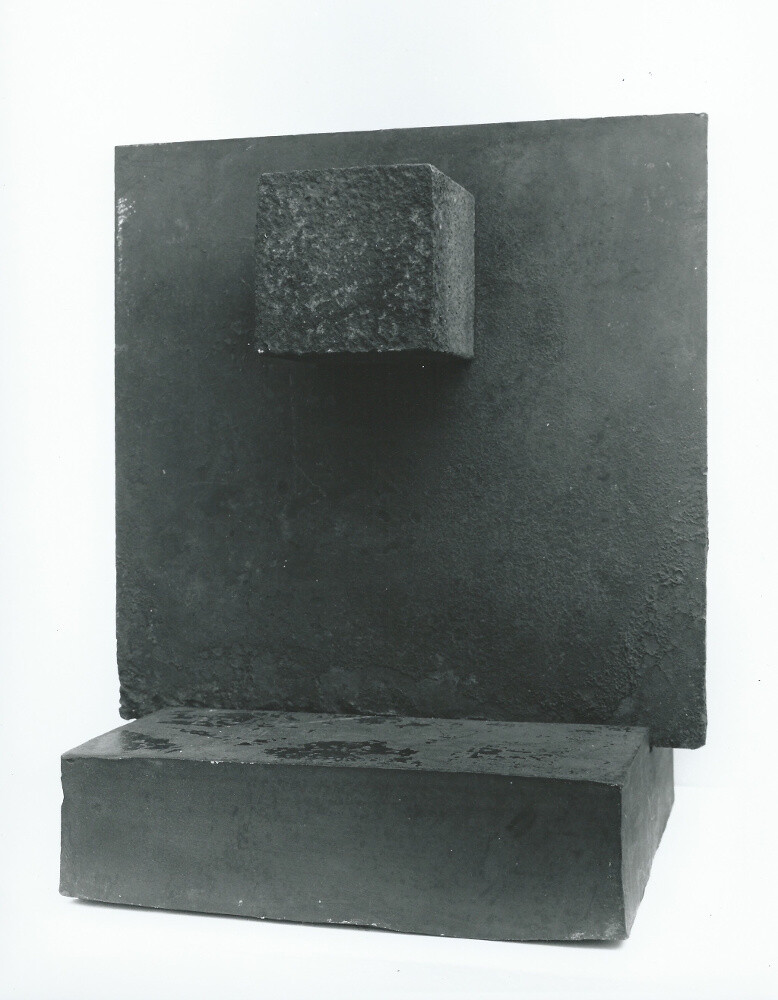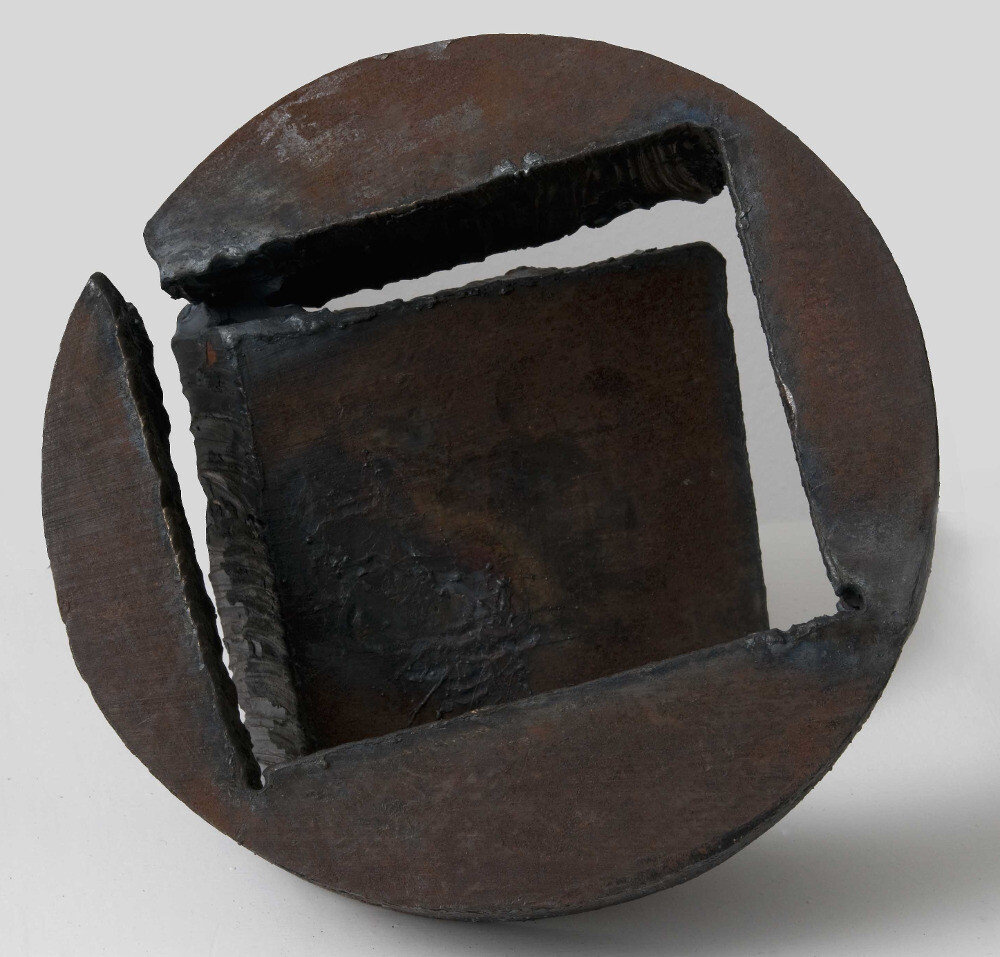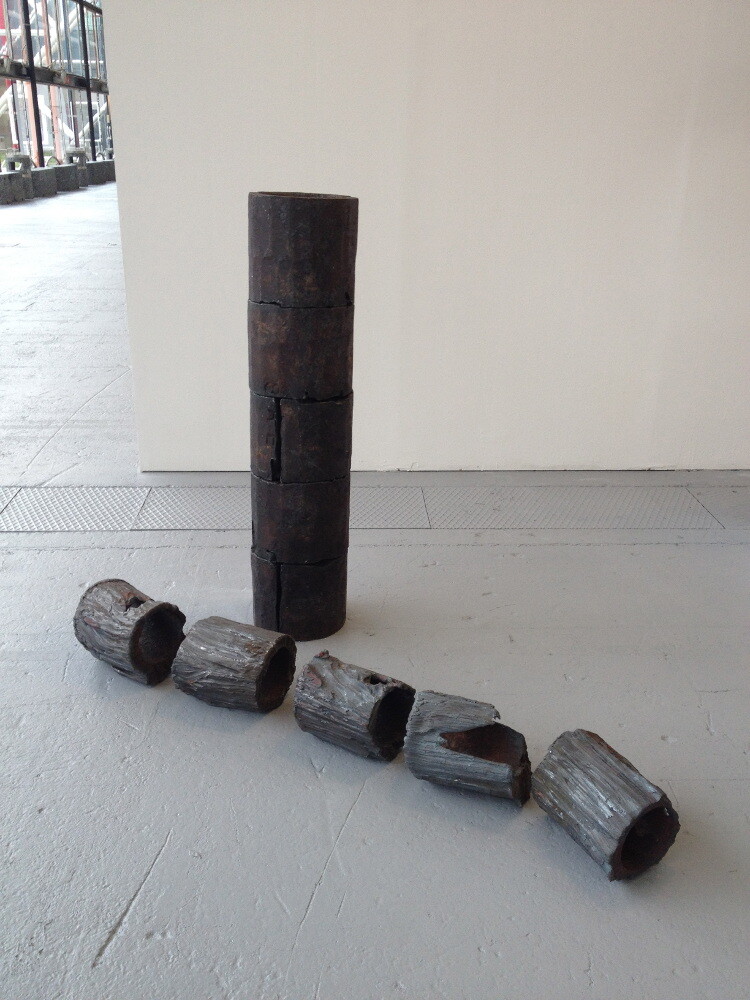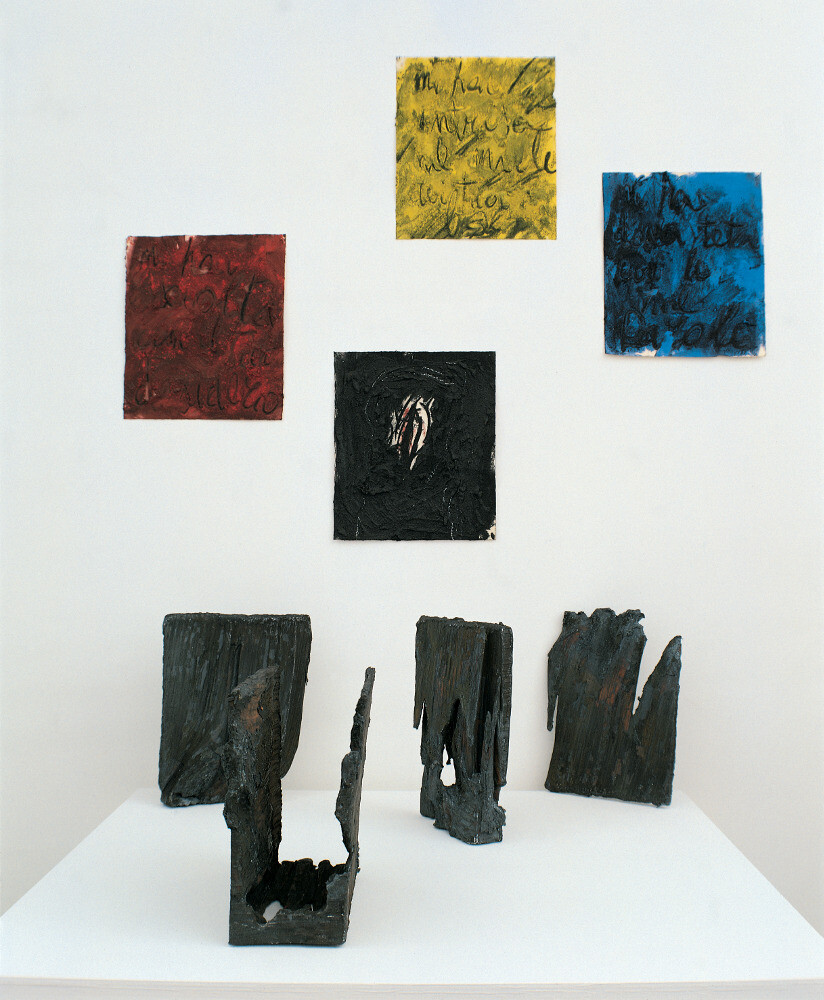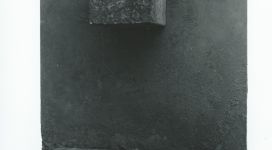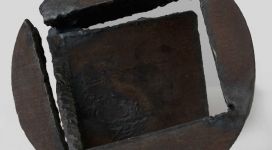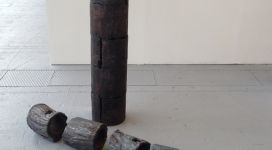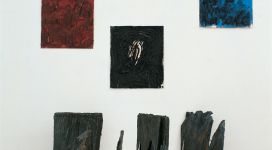| GIUSEPPE SPAGNULO | Exhibition 2006 | |
| Catalog |
Giuseppe Spagnulo was born in Grottaglie (in the Province of Taranto, in Puglia) in 1936. This was already one of the most important centres for ceramics in Italy, and Spagnulo received his first training in terracotta and in using the potter’s wheel in his father’s studio there. After studying at a specialised art secondary school, he enrolled at the Faenza Ceramics Institute, where he studied from 1952 until 1958, and where he was a student of Angelo Biancini. This was one of the best places in Italy to study ceramics, and had significant international links, including one with the French ceramicist Albert Diato, who showed the students his techniques of working with materials at “high temperatures”. Spagnulo met Carlo Zauli and Nanni Valentini, with whom he had in common a deep sense of the use of “earths”, and made his first pieces in stoneware. Moreover, the possibility of frequent visits to the Faenza Ceramics Museum, where he saw first hand pieces by Picasso donated in the Fifties, greatly enriched his training.
In 1959 Spagnulo moved to Milan where he enrolled at the Accademia di Brera, but he soon decided to work as an assistant in the studios of Fontana and of Pomodoro. He met Tancredi and Manzoni; through his contact with Fontana, Spagnulo came to know Albisola’s informal ceramics. After an initial dedication to works in ceramics, the artist began to work mainly on sculptures, executing works in terracotta, in stone and in wood, which he presented in his first personal exhibition in 1965 in Milan at the Salone Annunciata.
Three years later he finished his first great pieces in metal, which were to be installed in the open spaces in public squares, to stimulate communication between common people. These sculptures took on the identity of a provocative social gesture reflecting the artist’s participation in the students’ and workers’ protests of ’68; indeed these “big bits of metal” – modelled in the furnaces, workshops and foundries with the workers – seem to alter the space around them in a loud cry of protest. These are pieces which draw attention to the sculptor’s art, now turned to examine the physical nature of materials in order to create volumes which occupy space with a certain pregnant air. Noteworthy are his shows at the 1972 36th Venice International Biennale with the piece entitled The Game, the personal shows at the m Gallery in Bochum (Germany , 1974) and at the Carlo Grossetti Studio in Milan (1978).
Spagnulo’s activity in the Seventies was fervid, with personal and collective shows in Italy and abroad both in public spaces (Salone Annunciata, Milan, 1975; Galleria Civica d’Arte Moderna e Contemporanea, Turin; Documenta 6, Kassel, 1977) and in private galleries (Studio Marconi, 1976; Galleria Walter Storms, Munich, 1977). In this period, the dualism between physical/material work and intellectual work is always resolved in a balanced way. The “Cartoni”, “Archeologia” and “Paesaggi” series belong to this period and were presented in a personal show in 1977 at the Newport Harbor Art Museum in California. Two years later, researching his own past and his own cultural origins, Spagnulo came to the end of a Mediterranean journey between Puglia and Greece; in the Eighties he was invited to Berlin and in a manner od speaking undertook the journey again, this time in his mind, executing large pieces such as “Antigone”, “Morta Natura”, or “Le armi di Achille” in which there are various different materials at play: sand, wood, terracotta and iron.
Once again in Milan, from 1982 Spagnulo, who had always been fascinated by craftsmen’s techniques, went back to his initial interest in ceramics, using an enormous potter’s wheel to create his great “Turris”, later forged in steel. These are also years in which the artist had innumerable shows, both in Italy and Germany: the years of the shows at the Isola gallery in Roma, at the Galleria Civica in Modena and at the Kunsthalle in Dusseldorf (1984); at the Hans Barlach gallery in Cologne (1986); and at the GAM in Bologna (1989).
The end of the decade saw the artist return to the use of steel, the only material used in his “Pieces of Iron” show at the Martano gallery in Turin, 1989. In the Nineties it gave a new sense to his sculptures, as he suspended large blocks of steel as a challenge to the gravity of the material. He then had shows at the 44th and 46th Venice International Art Biennale (1990 e 1995), at the Fioretto gallery in Padua (1993), and at the Palazzo Reale in Milano (1997).
In parallel to his constant production of work, Spagnulo continued to exhibit in personal and collective shows in Northern European galleries and museums (1974, Galerie Hubert, Zurich; 1981, Neue Nationalgalerie, Staatliche Museum, Berlin; 1985, Kunstverein, Hamburg; 1996, Galerie Walter Storms, Munich; 2004, Galerie Hoss Wollmann, Stuttgart). In addition in the early Nineties he took on the chair of sculpture at Stuttgart’s Fine Art Academy.
Spagnulo’s works – which in 2001 had received the recognition of the critics by being awarded the “Faenza career prize” and the International Urban Décor prize in Milan – were exhibited at the Otto gallery in Bologna (2003) and at the Peggy Guggenheim Collection in Venezia (2005).
2006 saw the artist among the leading names in contemporary international sculpture in Gubbio (24th Sculpture Biennal, Palazzo Pretorio), Tivoli (Sculpture at the Villa, Villa D’Este), Aglié (International Sculpture, Castello Ducale), Todi (Giuseppe Spagnulo – Papers and Sculptures, galleria Extra Moenia), Florence (Cantico, galleria Il Ponte) and Isola Del Gran Sasso (12th Biennal of Contemporary Sacred Art, Stauros Museum of Contemporary Sacred Art).
